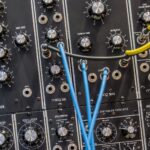Support our educational content for free when you purchase through links on our site. Learn more
The New Order Feud: 7 Reasons Why Hooky and Barney Can’t Stand Each Other [2024] 💥
The story of New Order is one of both musical brilliance and bitter rivalry. While their iconic synth-pop anthems continue to echo across generations, the band’s legacy is forever intertwined with the acrimonious relationship between bassist Peter Hook and vocalist/guitarist Bernard Sumner. This article delves into the seven key reasons why the two former bandmates can’t seem to see eye to eye, from clashing creative visions to bitter legal battles.
We’ll explore the complex history of their relationship, from the early days of Joy Division to the band’s final split, examining the factors that fueled their feud and the lasting impact it has had on their music and legacy. We’ll also discuss the possibility of a reunion, and whether the two sides can ever truly reconcile. So, grab your headphones, crank up the volume, and prepare to dive into the fascinating, and sometimes heartbreaking, story of New Order’s enduring feud.
Quick Answer
Here’s a quick rundown of the main reasons why Peter Hook and Bernard Sumner have a contentious relationship:
- Clashing Creative Visions: Hook favored a more rock-oriented sound, while Sumner leaned towards electronic dance music.
- Clashing Personalities: Hook’s boisterous nature and love of the limelight often clashed with Sumner’s quieter, more introspective approach.
- Side Projects: Hook resented Sumner’s collaboration with Johnny Marr in Electronic.
- Control and Power: Hook felt overshadowed by Sumner’s songwriting and leadership.
- Financial Disputes: Hook claimed he was not receiving his fair share of royalties after a restructuring of the band’s finances.
- Legal Battles: Hook sued Sumner, Morris, and Gilbert for millions of pounds in unpaid royalties, further deepening the animosity.
- Missed Opportunities: The feud has prevented a proper reunion, robbing fans of the chance to see Hook and Sumner perform together again.
👉 Shop New Order on:
Table of Contents
- Quick Tips and Facts
- The New Order Story: From Joy Division to Synth Pop Pioneers
- The Peter Hook and Bernard Sumner Rift: A Tale of Two Bassists
- The “Power, Control and Money” Dispute: A Deeper Dive
- The Legacy of the New Order Feud: A Lasting Impact on the Band’s History
- The New Order Reunion: A Hope for the Future?
- Conclusion
- Recommended Links
- FAQ
- Reference Links
Quick Tips and Facts (#quick-tips-and-facts)
- New Order emerged from the ashes of Joy Division after the tragic suicide of lead singer Ian Curtis in 1980. The remaining members, Bernard Sumner, Peter Hook, and Stephen Morris, decided to continue making music, eventually joined by Gillian Gilbert.
- The band’s sound evolved from Joy Division’s post-punk roots to incorporate elements of synth-pop and electronic dance music. This shift, along with their innovative use of synthesizers and drum machines, helped define the sound of the 80s. Think Depeche Mode meets The Cure with a splash of Kraftwerk! 🎧
- Despite their musical success, New Order has been plagued by internal conflicts, primarily stemming from the often-turbulent relationship between bassist Peter Hook and vocalist/guitarist Bernard Sumner. 💥
- The band has officially split once (in 1993) and experienced Hook’s departure in 2007. While they reunited in 2011 without Hook, the bad blood between him and the remaining members continues to this day.
- Legal battles over royalties and the use of the band’s name have further fueled the animosity between the two camps. ⚖️
The New Order Story: From Joy Division to Synth Pop Pioneers (#the-new-order-story-from-joy-division-to-synth-pop-pioneers)
Ah, New Order! A band whose legacy is as complex and fascinating as their music. To understand the roots of their internal strife, we need to rewind to the late 70s, to the gritty streets of Manchester, England, where a little band called Joy Division was making waves.
From Post-Punk Darkness to Synth-Pop Innovation
Joy Division, with their brooding intensity and Ian Curtis’s haunting vocals, became synonymous with the burgeoning post-punk scene. But their success was tragically cut short by Curtis’s suicide in 1980.
The remaining members were devastated but determined to continue making music. Thus, New Order was born. Their early work, like the album Movement (1981), still bore the weight of Joy Division’s sound, but a shift was on the horizon.
Inspired by electronic music pioneers like Kraftwerk and their experiences in New York clubs, New Order began incorporating synthesizers and drum machines into their music. The result was a groundbreaking blend of post-punk angst and dancefloor euphoria that would come to define their signature sound.
Chart Success and Internal Tensions
Albums like Power, Corruption & Lies (1983) and Low-Life (1985) cemented New Order’s status as synth-pop icons. Tracks like “Blue Monday,” “Temptation,” and “Bizarre Love Triangle” became anthems of the decade, blending introspective lyrics with irresistible grooves.
But as New Order’s star rose, so did the tensions within the band. The dynamic between Peter Hook and Bernard Sumner, always a volatile mix, began to unravel.
Want to know more about other iconic synth-pop groups? Check out our article: 2023 What Happened to Eurythmics? The Rise and Evolution of a Synth Pop Duo at https://synpop.com/what-happened-to-eurythmics/.
The Peter Hook and Bernard Sumner Rift: A Tale of Two Bassists (#the-peter-hook-and-bernard-sumner-rift-a-tale-of-two-bassists)
The relationship between Peter Hook and Bernard Sumner is the stuff of rock and roll legend – a volatile cocktail of creative brilliance, clashing egos, and bitter resentment.
A Clash of Styles and Personalities
From the beginning, Hook and Sumner were an unlikely pair. Hook, the boisterous bassist with a melodic, driving style, and Sumner, the quieter, more introspective guitarist and vocalist, often clashed over the band’s musical direction.
Hook, a self-proclaimed “rockist” at heart, favored a rawer, more guitar-driven sound, while Sumner, increasingly drawn to electronic music, pushed the band towards a more synth-heavy, dance-oriented approach.
These musical differences were exacerbated by their clashing personalities. Hook, known for his outspoken nature and love of the limelight, often felt overshadowed by Sumner’s songwriting and stage presence. Sumner, in turn, found Hook’s behavior increasingly difficult to handle.
Side Projects and Growing Resentment
As the 80s progressed, both Hook and Sumner sought outlets for their creative visions outside of New Order. Hook formed the band Revenge with Davyth Hicks, while Sumner teamed up with The Smiths’ guitarist Johnny Marr to create Electronic.
These side projects, while musically successful, only served to widen the rift between the two. Hook, in particular, felt betrayed by Sumner’s collaboration with Marr, seeing it as a sign that Sumner no longer valued their partnership.
The Final Straws
The tensions between Hook and Sumner reached a boiling point in the late 90s and early 2000s. Hook’s purchase of the Hacienda nightclub, a symbol of New Order’s success, without consulting the other members, further strained their relationship.
By the time New Order reunited in 2001, the damage was irreparable. Despite releasing two more albums, Get Ready (2001) and Waiting for the Sirens’ Call (2005), the band was a shadow of its former self. Hook’s departure in 2007, citing “personal differences,” marked the end of an era.
The “Power, Control and Money” Dispute: A Deeper Dive (#the-power-control-and-money-dispute-a-deeper-dive)
While creative differences and clashing personalities played a significant role in New Order’s demise, the issue of money, as it often does, added fuel to the fire.
The Royalties Row
Following Hook’s departure in 2007, the remaining members of New Order continued to tour and record under the band’s name. Hook, however, claimed that he was not receiving his fair share of royalties from the band’s back catalog.
This dispute stemmed from a 2011 agreement that saw Sumner, Morris, and Gilbert form a new company, Bad Lieutenant Ltd, to manage New Order’s affairs. Hook argued that this restructuring was designed to cut him out of future earnings.
Legal Battles and Bitter Accusations
In 2015, Hook launched a legal battle against his former bandmates, suing them for millions of pounds in unpaid royalties. The case was settled out of court in 2017, with the terms of the settlement remaining confidential.
The legal battle only served to deepen the animosity between the two camps. Hook accused Sumner, Morris, and Gilbert of greed and betrayal, while they, in turn, accused him of being motivated solely by money.
The Legacy of the Dispute
The “power, control, and money” dispute cast a long shadow over New Order’s legacy. It highlighted the often-uncomfortable relationship between art and commerce in the music industry, and it left fans wondering if a band that had once seemed inseparable could ever truly reconcile.
The Legacy of the New Order Feud: A Lasting Impact on the Band’s History (#the-legacy-of-the-new-order-feud-a-lasting-impact-on-the-bands-history)

The fallout between Peter Hook and the rest of New Order is a cautionary tale of what happens when creative partnerships turn sour. It’s a story as old as rock and roll itself: ambition, ego, and money colliding with explosive results.
A House Divided
The feud has undoubtedly tarnished New Order’s legacy. What was once a band known for its groundbreaking music and innovative spirit is now often associated with bitterness and infighting.
The constant back-and-forth between Hook and Sumner in the press, each accusing the other of wrongdoing, has left fans feeling disillusioned and exhausted. It’s hard to reconcile the image of these aging musicians slinging mud at each other with the band that created such timeless and uplifting music.
Musical Echoes and Missed Opportunities
The feud has also had a tangible impact on the music itself. Hook’s departure robbed New Order of his distinctive bass lines, a key element of their sound. While the band has continued to release new music, it’s difficult not to hear Hook’s absence.
And then there’s the missed opportunity for a proper reunion, one that could have celebrated their legacy and introduced their music to a new generation. The thought of Hook and Sumner sharing a stage again, their differences set aside, remains a tantalizing “what if” for fans.
The New Order Reunion: A Hope for the Future? (#the-new-order-reunion-a-hope-for-the-future)
Despite the acrimony and legal battles, the question remains: could there ever be a New Order reunion with both Peter Hook and Bernard Sumner?
Never Say Never?
In the world of rock and roll, stranger things have happened. Bands that seemed destined to remain sworn enemies have surprised fans with reunions, often motivated by a combination of nostalgia, forgiveness, and, let’s be honest, financial incentives.
There have been glimmers of hope. Both Hook and Sumner have hinted at the possibility of a reconciliation in interviews, albeit with caveats and conditions attached.
The Obstacles to Reunion
However, the obstacles to a reunion remain significant. The wounds of the past run deep, and the years of public mudslinging have created a level of animosity that will be difficult to overcome.
There’s also the issue of creative control. Both Hook and Sumner are strong-willed musicians with their own visions. Finding common ground after years of working apart would be a challenge, to say the least.
A Dream for Fans
Despite the challenges, a New Order reunion with Hook and Sumner would be a momentous event. It would be a chance for the band to heal old wounds, celebrate their legacy, and perhaps even create new music together.
For fans, it would be a dream come true. The chance to see Hook and Sumner sharing a stage again, performing the songs that defined a generation, would be a truly special experience.
Only time will tell if the two sides can put their differences aside and make this dream a reality. Until then, we can only hope that the music, at its core, will always be a force for unity, even if the people who created it remain divided.
Conclusion (#conclusion)

The story of New Order is a bittersweet one. A band that rose from tragedy to become pioneers of synth-pop, their journey has been marred by internal conflict and personal animosity. While their music continues to resonate with fans worldwide, the legacy of their feud casts a long shadow.
The question of a reunion remains open. While the possibility of Hook and Sumner sharing a stage again is tempting, the deep-seated resentments and creative differences may prove insurmountable. Only time will tell if the music, at its core, can ultimately bridge the gap between these two titans of synth-pop.
Recommended Links (#recommended-links)
👉 Shop New Order on:
👉 Shop Peter Hook on:
- Amazon: Peter Hook
👉 Shop Bernard Sumner on:
- Amazon: Bernard Sumner
Read more on:
- Amazon: Unknown Pleasures by Peter Hook
- Amazon: Chapter and Verse by Bernard Sumner
FAQ (#faq)

Why did the New Order break up?
New Order officially disbanded in 1993, citing creative differences and a desire to pursue individual projects. However, the band reunited in 2001 and continued to release music until Peter Hook’s departure in 2007. The band’s final album, Music Complete, was released in 2015.
What were the reasons for the band’s break up?
The band’s breakup was primarily due to the growing tension between Peter Hook and Bernard Sumner, who had differing visions for the band’s musical direction and creative control. Hook’s departure in 2007 marked the end of the band’s original lineup.
Read more about “18 Reasons Why CHVRCHES Will Be Your New Favorite Band … 🎧”
Why did Hooky and Barney fall out?
The rift between Peter Hook and Bernard Sumner, often referred to as “Hooky” and “Barney,” is complex and multifaceted. It stems from a combination of creative differences, clashing personalities, and a dispute over royalties and control of the band’s assets.
What were the key issues that led to their falling out?
- Musical Direction: Hook favored a more rock-oriented sound, while Sumner leaned towards electronic dance music.
- Creative Control: Hook felt overshadowed by Sumner’s songwriting and leadership.
- Side Projects: Hook resented Sumner’s collaboration with Johnny Marr in Electronic.
- Financial Disputes: Hook claimed he was not receiving his fair share of royalties after a restructuring of the band’s finances.
What happened to members of New Order?
- Peter Hook: After leaving New Order, Hook formed the band The Light and continued to release music, often performing Joy Division and New Order songs. He also released a memoir, Unknown Pleasures, detailing his time in both bands.
- Bernard Sumner: Sumner continued to make music with Electronic and released solo albums. He also collaborated with other artists, including Johnny Marr and New Order’s Stephen Morris.
- Stephen Morris: Morris has continued to work as a musician, both with New Order and on solo projects.
- Gillian Gilbert: Gilbert left New Order in 2001, but she has since returned to collaborate on various projects, including the band’s final album, Music Complete.
Why did Joy Division break up?
Joy Division’s tragic breakup was due to the suicide of their lead singer, Ian Curtis, in 1980. Curtis’s mental health struggles, fueled by epilepsy and the pressures of fame, ultimately led to his tragic demise. The remaining members, Bernard Sumner, Peter Hook, and Stephen Morris, decided to continue making music as New Order, honoring Curtis’s legacy while forging their own path.
Read more about “New Order: The Definitive Guide to the Legendary Band … 🎵”
Reference Links (#reference-links)
- New Order Official Website: New Order
- Peter Hook Official Website: Peter Hook
- Bernard Sumner Official Website: Bernard Sumner
- Joy Division Official Website: Joy Division
- The Guardian: New Order Reaches Settlement with Former Bassist Peter Hook
- Wikipedia: New Order
- The Telegraph: Hate Will Tear Us Apart: New Order’s Bernard Sumner and Peter Hook






